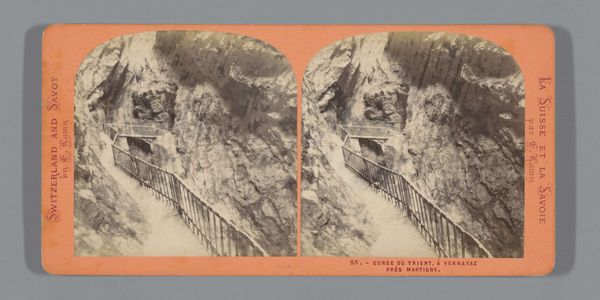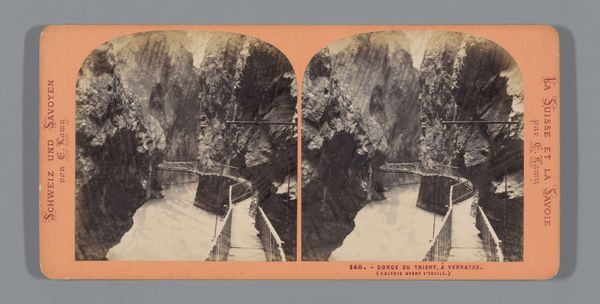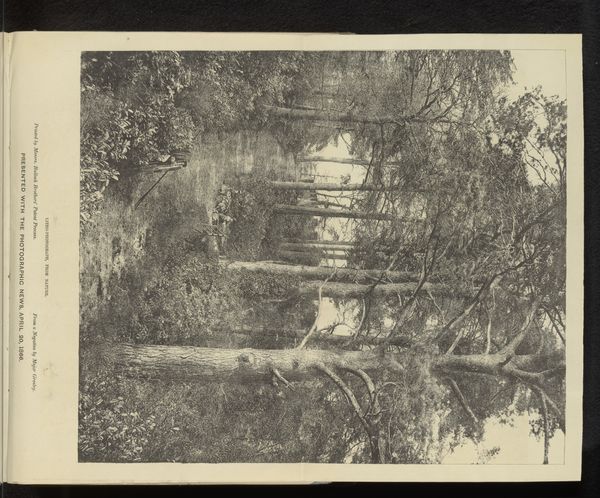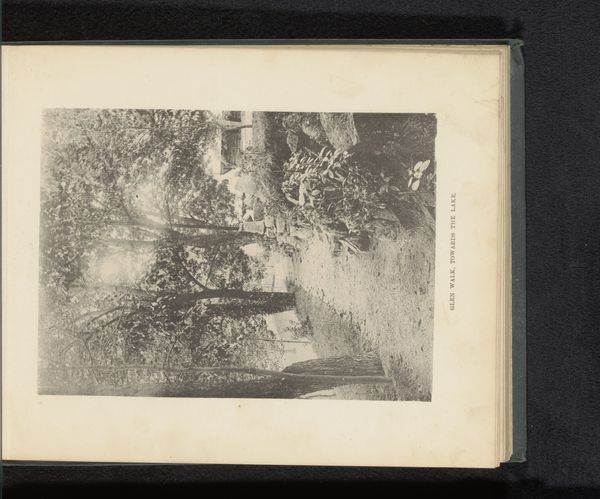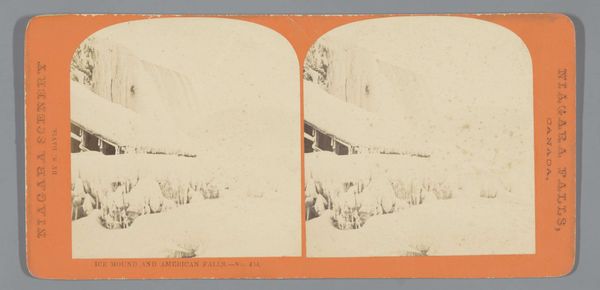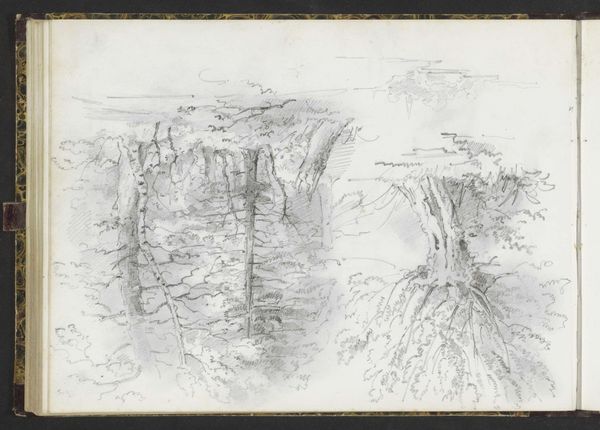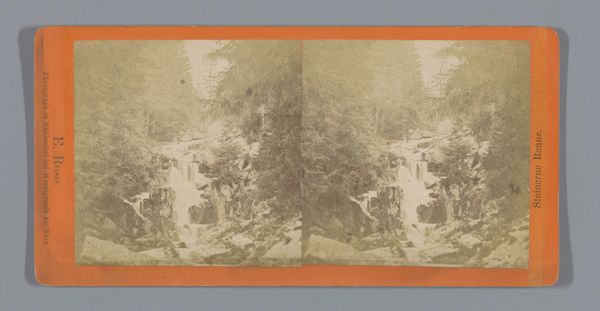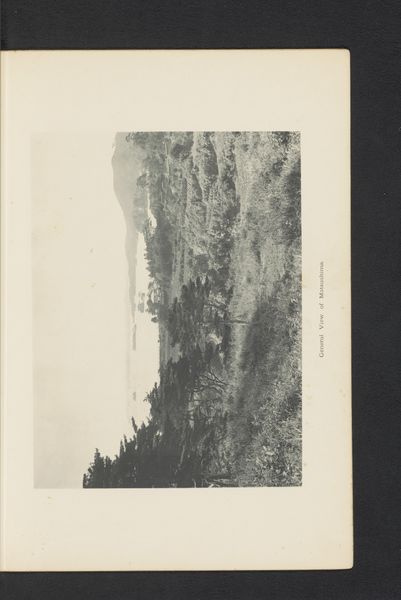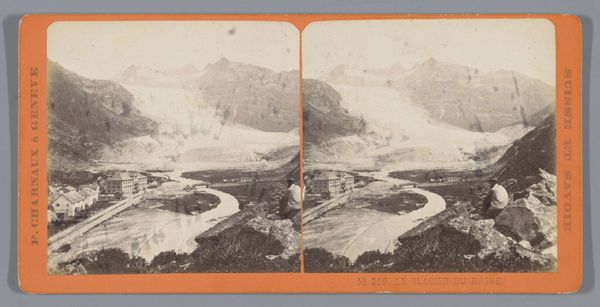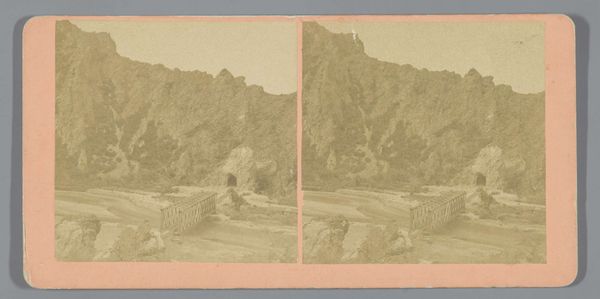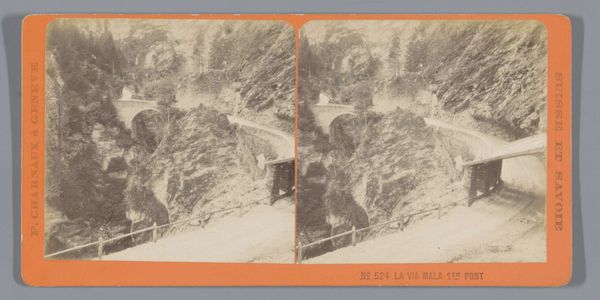
Dimensions: height 85 mm, width 170 mm
Copyright: Rijks Museum: Open Domain
Curator: This stereoscopic photograph captures a loop road at the Gorges du Trient, created sometime between 1860 and 1880 by E. Lamy. Notice how the twin images simulate depth and invite the viewer into the scene. Editor: There’s something haunting about this scene; the harsh blacks and whites convey this feeling of looming solitude in this photograph of the canyon and suspension bridge. I’m particularly drawn to how the water appears almost solid due to the photographic technique, turning something fluid into stone. Curator: Indeed. That frozen quality is significant. Water, in symbolic terms, often represents the unconscious, the flowing, and the changeable aspects of life. Its solid representation here creates a sense of emotional suppression. Paired with the architecture, it suggests humankind’s attempts to master the fluidity of nature. Editor: The bridge's linear architecture starkly contrasts with the organic curves of the rock face. I'm looking at the textures--the grainy stone versus the engineered wood and iron. It highlights the tensions in Romanticism, right? Man versus nature. Curator: Precisely. Bridges also bear tremendous symbolic weight: they signify transitions, connections between disparate realms, or, perhaps, a precarious balance over the churning depths of inner turmoil. This could speak to a transitional point in someone's life. The romantic era dwelled upon that friction, with structures to contain wild, uncontainable spaces. Editor: That interplay continues to fascinate! The formal components of composition amplify the feeling. The vantage point looking directly across, reinforces a linear and perhaps stagnant composition. Curator: For me, it's that dichotomy that makes this piece thought-provoking. We see this attempt to bridge nature, but the gorge, wild and untamed, asserts its dominance. The photograph speaks to humanity's ever-present dance between control and yielding. Editor: And the material properties of photography itself--a captured moment, a fleeting view, ossified and re-presented. I appreciate how studying these elements illuminates both cultural anxieties and material awareness from that era.
Comments
No comments
Be the first to comment and join the conversation on the ultimate creative platform.
